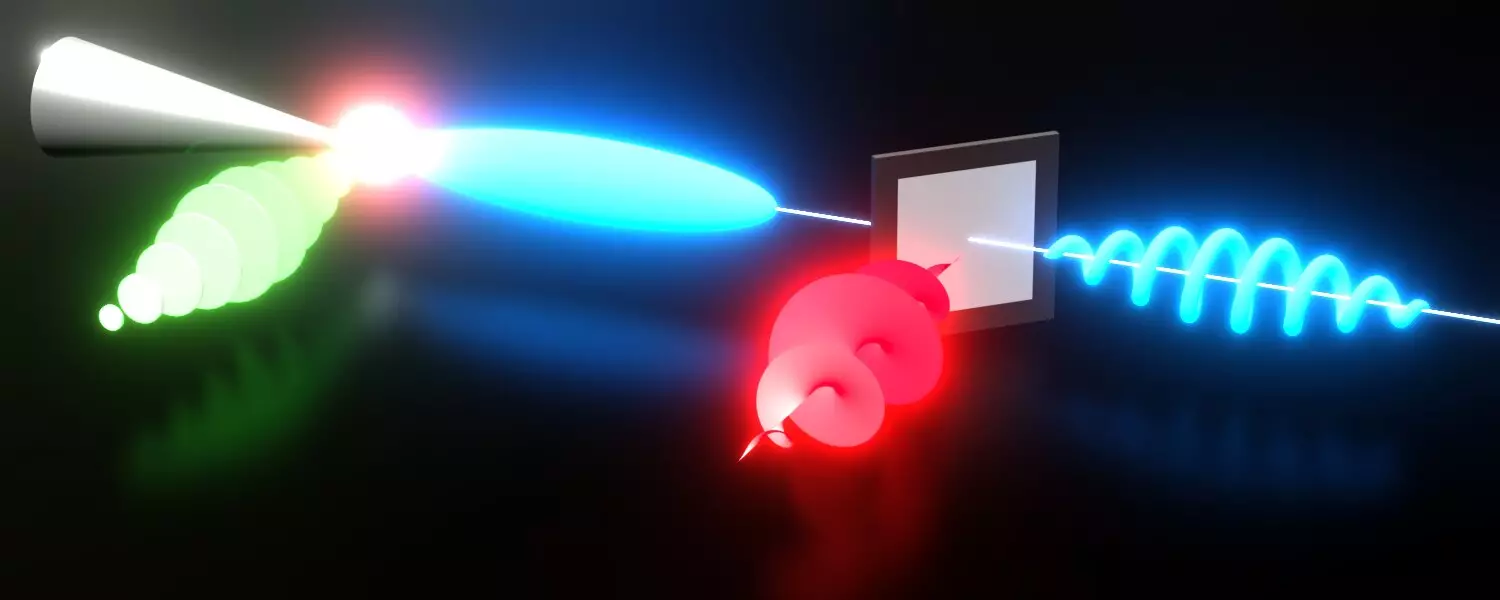Chirality—a concept rooted deeply in both our everyday experience and the subtleties of quantum physics—refers to the property of an object that cannot be superimposed on its mirror image. Many of us may not realize that our own hands exemplify chirality; the left hand can never perfectly align with the right hand, despite possessing identical structures. This fascinating property extends beyond biology and physics, playing a crucial role in chemistry and material science. The recent breakthrough by scientists at the University of Konstanz in shaping the wave function of a single electron into a chiral form opens exciting avenues for understanding and manipulating this property at a fundamental level.
The Quantum Breakthrough: Chiral Electrons
In an astonishing feat, researchers successfully imparted three-dimensional chirality onto a single electron’s matter wave, crafting it into distinctive left-handed and right-handed configurations. Traditional methods of manipulating electrons have focused primarily on their spin or trajectory; however, this new approach centers on the wave function itself—a pivotal aspect of quantum mechanics. The implications of such a development are profound, potentially impacting fields from quantum optics to particle physics and even electron microscopy. As Peter Baum, the study’s lead author, succinctly puts it, this research unleashes untapped potentials in science that could redefine our understanding of fundamental particles.
Chirality: A Key to Understanding Advanced Phenomena
Chirality is not merely an abstract concept; it has tangible consequences in our world. One of the most captivating aspects is how chirality affects the behavior of materials. For instance, in the realm of chemistry, the chirality of a molecule can dictate whether a substance serves as a therapeutic agent or a toxic compound. This fundamental importance extends to the realm of materials science, where the manipulation of chiral structures could lead to innovations in magnetic materials and metamaterials—ultimately influencing technologies like topological insulators and enhancing methods such as chiral dichroism.
The study reveals that while elementary particles like electrons have intrinsic spin-related chirality, it is indeed possible to create composite chiral objects. This suggests that chirality may emerge from an interplay of non-chiral constituents, foreshadowing potential applications in nanotechnology, where intricate control of material properties becomes essential.
Groundbreaking Techniques and Methodology
To achieve their groundbreaking results, the Konstanz team employed a combination of cutting-edge technologies, including an ultrafast transmission electron microscope paired with advanced laser systems. Their innovative approach involved generating femtosecond electron pulses and modulating them using laser waves infused with spiral electric fields. In a typical scenario, the conservation of energy and momentum would hinder this interaction, but the use of silicon nitride membranes enabled this unique manipulation of electron trajectories.
By accelerating and decelerating electrons according to their azimuthal positions, the researchers were able to shape their wave functions into distinct chiral geometries. This approach diverges dramatically from previous methodologies that focused on altering the spin or traditional trajectories of electrons, showcasing an impressive expansion of how we can manipulate and understand quantum phenomena.
The Versatility and Future Implications of Chiral Electrons
The ramifications of this breakthrough extend far into the horizon of scientific innovation. Shaping electrons into chiral coils introduces exciting opportunities for the development of advanced technologies. Chiral electron beams could revolutionize personal devices such as chiral optical tweezers, improving sensor technologies, and enhancing quantum electron microscopy. Furthermore, the ability to manipulate electrons with such precision offers unprecedented opportunities for probing rotational dynamics in atomic and nanostructured materials.
Baum’s declaration that the method is applicable to a wide array of particles sets the stage for probing additional elementary particles that may exhibit similar chiral characteristics. This inquiry poses tantalizing questions regarding cosmological implications and whether other particles can be shaped and utilized similarly.
As the researchers delve deeper into the potential of chiral electrons through attosecond imaging and two-electron microscopy, our understanding of the interplay between light, matter waves, and the fundamental forces governing our universe stands to be enriched significantly. The journey of chiral electrons has only just begun, but its potential to reshape scientific paradigms is undeniable.

